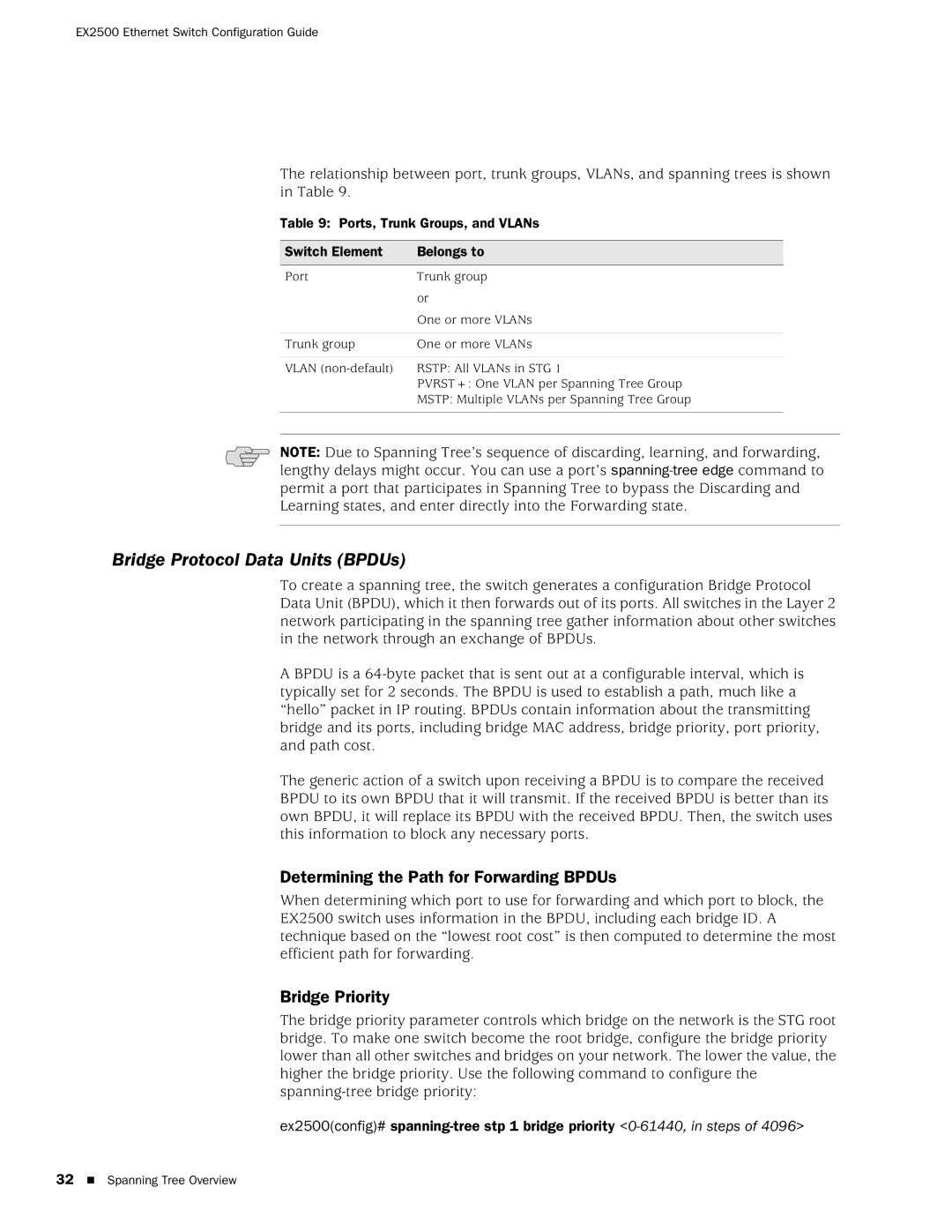
EX2500 Ethernet Switch Configuration Guide
The relationship between port, trunk groups, VLANs, and spanning trees is shown in Table 9.
Table 9: Ports, Trunk Groups, and VLANs
Switch Element | Belongs to |
|
|
|
|
Port | Trunk group |
|
| or |
|
| One or more VLANs |
|
|
|
|
Trunk group | One or more VLANs |
|
|
|
|
VLAN | RSTP: All VLANs in STG 1 |
|
| PVRST+: One VLAN per Spanning Tree Group |
|
| MSTP: Multiple VLANs per Spanning Tree Group |
|
|
|
|
|
|
|
NOTE: Due to Spanning Tree’s sequence of discarding, learning, and forwarding, lengthy delays might occur. You can use a port’s
Bridge Protocol Data Units (BPDUs)
To create a spanning tree, the switch generates a configuration Bridge Protocol Data Unit (BPDU), which it then forwards out of its ports. All switches in the Layer 2 network participating in the spanning tree gather information about other switches in the network through an exchange of BPDUs.
A BPDU is a
The generic action of a switch upon receiving a BPDU is to compare the received BPDU to its own BPDU that it will transmit. If the received BPDU is better than its own BPDU, it will replace its BPDU with the received BPDU. Then, the switch uses this information to block any necessary ports.
Determining the Path for Forwarding BPDUs
When determining which port to use for forwarding and which port to block, the EX2500 switch uses information in the BPDU, including each bridge ID. A technique based on the “lowest root cost” is then computed to determine the most efficient path for forwarding.
Bridge Priority
The bridge priority parameter controls which bridge on the network is the STG root bridge. To make one switch become the root bridge, configure the bridge priority lower than all other switches and bridges on your network. The lower the value, the higher the bridge priority. Use the following command to configure the
ex2500(config)#
32 Spanning Tree Overview
